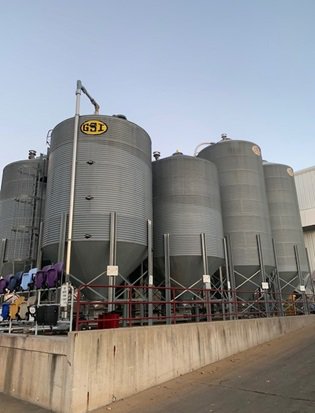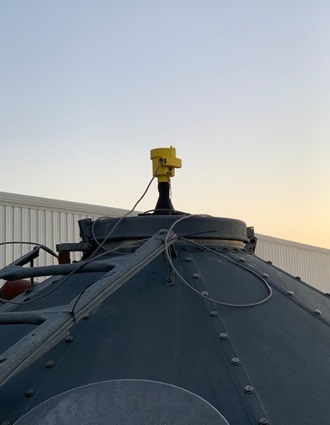Plastic pellets to stadium seating: How 80 GHz radar level measurement guarantees seating for millions
For anyone who’s been to a professional or college sporting event, chances are they’ve sat down in one of the tens of thousands of identical stadium seats. Many of those chairs are made of a type of plastic using custom injection molding.
An employee-owned business in central Michigan specializes in making seats like these for stadiums and auditoriums all over the country. They recently purchased multiple 80 GHz VEGAPULS 69 radar level measurement sensors to better manage their raw materials inventory, improve worker safety, and eliminate waste.
Maintaining inventory for all those seats with better level measurement
As a custom thermoplastics injection molding company, one of the first steps in making all those stadium and auditorium seats is acquiring and storing all the raw materials – various types and grades of polyethylene and polypropylene pellets. At most facilities like this one in the Midwest, they’re stored in tall silos outside of the main manufacturing building.
Checking inventory in these silos had always been a hands-on job. No matter the season or the weather, someone climbed to the top of these tall silos, opened a hatch, and used a tape measure to make a measurement once a week. Any inventory the rest of the week would be calculated based on usage and additional material orders that week.
This type of setup isn’t out of the ordinary at many companies storing plastic pellets. Through-air radars have historically had trouble measuring plastic pellets because of their low dielectric constant and poor reflective qualities. This left most radar sensors incapable of getting a strong enough signal off of the surface of the material to provide an accurate and reliable measurement - until 80 Ghz radar.
80 GHz radar opens up new possibilities for silo level measurement
All radar level sensors make a measurement by emitting radio microwaves from the sensor’s antenna system to the measured product. Those microwaves are reflected by the product surface and received by the antenna system, and the signal’s time of flight from emission to reception is used to calculate a level measurement. 
Radars like the VEGAPULS 69 use a higher 80 GHz frequency, improved dynamic range to receive more of the microwave signal, and special software to generate an accurate and reliable measurement. All these factors working together have opened new measurement possibilities for plastic pellet consumers and manufacturers alike.
The higher 80 GHz frequency gives the radar beam a narrower focus, so more of the energy is concentrated in a smaller area. With more energy hitting the product surface in a smaller area, a stronger return signal is possible.
The VEGAPULS 69 also takes advantage of a higher dynamic range, which is the range of signals – high or low energy – a radar sensor can detect. This higher dynamic range allows the VEGAPULS 69 to register weaker signals as well as strong ones.
The higher frequency and higher sensitivity may lead some users and technicians to believe a more sensitive radar would be more susceptible to measurement errors from false readings. All VEGA radar sensors prevent this common setback with special software that can filter out signals caused by any of this additional “noise.”
Overfilling, material outages a thing of the past
VEGA worked closely with the customer to install eight VEGAPULS 69 radar sensors on top of their eight silos and VEGADIS 82 display instruments at ground level. Weekly climbs to the top of these silos are now a distant memory. Instead, workers can just check the display with their feet firmly planted on the ground.
Each radar sensor provides accurate, real-time level measurements, so their manufacturing facility is no longer running out of precious raw materials at inopportune times nor are they ordering plastic pellets they don’t need. The VEGAPULS 69s have already greatly improved the safety of the employees, and the instruments are paying for themselves with a more efficient supply chain management.
Related products
Export this article
Download as PDFShare this article
Comments ({{comments.length}})
{{getCommentAuthor(comment, "Anonymous")}} {{comment.timestamp | date : "dd.MM.yyyy HH:mm" }}
{{comment.comment}}






